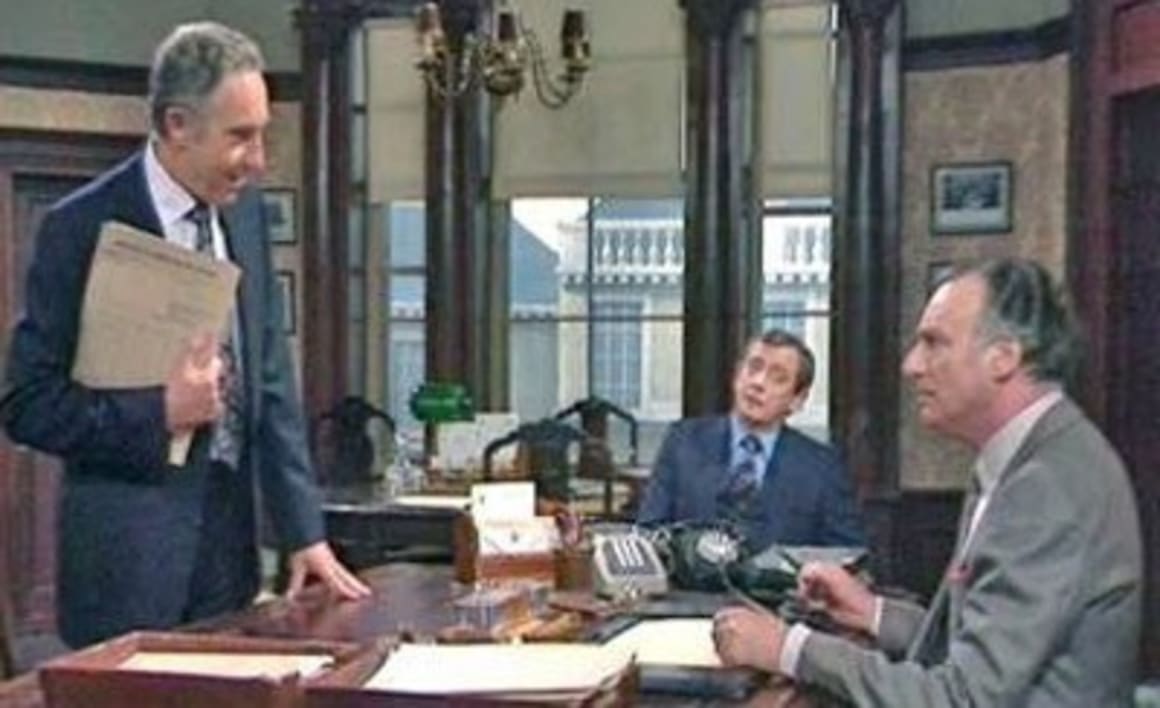Queensland's "30-year vision" a plot worthy of Yes Minister

Politicians have a great appetite for exercises that chew up lots of time and money for little purpose other than to attract spotlight and give the impression that they’re doing something.
The current federal inquiry into housing affordability is a classic of the genre. Let’s galvanise the nation with a talkfest about a non-existent problem. We can stretch it out over many months, with regular media events, and really make it look like we’re on the ball and genuinely care.
Sir Humphrey Appleby would be proud.
But the Yes Minister icon would be fit to burst at the latest effort of the Queensland government.
It’s only taken them two and half years in government, but they’ve finally come up with it: a vision for the state.
Not just any vision. This is a blueprint for what Queensland will look like 30 years from now.
As we’ve seen regularly in state and federal politics, most governments can’t estimate the state of their own budget one year ahead, let alone the state of play in 30 years’ time.
But this is not about reality. This is about creating an illusion. The delusion that Campbell Newman and his crew are actually in charge of the state’s destiny.
The current Queensland government is busily turning a landslide into a mudslide. They hold almost all the seats in the Parliament but still manage to look like they’re under siege a lot of the time, fighting for their lives.
Labor, almost wiped out in the 2012 state election, has just won a by-election with a swing of 18.6%, after winning a February by-election with a swing of 17.2%.
Queensland unemployment has risen sharply and, at 6.8%, is well above the national average and the highest in 11 years. Economic activity, as measured by state final demand, has fallen recently. Queensland got a mediocre rating in the latest State of the States report from CommSec, well behind the growth leaders Western Australia, the Northern Territory and New South Wales.
So it’s a good time to create a diversion, more for their own benefit than the publics’. As Sir Humphrey observed, politicians don’t believe they exist unless they read about themselves in the paper.
But what a pointless exercise. Why create a 30-year plan when you won’t be around to implement it? The current mob is unlikely to be in government even four years from now, given the extraordinary volatility in the electorate.
Newman won’t be Premier in 2024, much less in 2044 which is the ultimate destination of this plan - during which time there will be a dozen new governments, each with its own deep vision and long-term plan.
So why bother with this window dressing? Why publish a plan that you have no chance of implementing?
And why get excited about it as journalists, consumers, businesses and developers?
But some have. Media lapped it up and one newspaper came up with this: “A wave of housing demand in Queensland areas such as Gladstone is expected to flow from The Queensland Plan …”
One development company latched on to this to promote the “masterplanned community” it’s developing in Gladstone. It said Gladstone had emerged as a growth area recently.
In reality, the only real estate factors growing in Gladstone at the moment are the vacancy rate (around 7%) and the consternation of investors who own property there. Prices have 10% in the past 12 months and it will get worse when the construction phase of the three mega gas projects winds down.
There are plenty of Queensland places worthy of consideration by investors, including Toowoomba, Cairns and the Sunshine Coast – each of them growing strongly for local reasons. Toowoomba, as I discussed earlier in the week, is arguably the nation’s strongest property market. Cairns is pumping in a way not seen since the 1980s and the Sunshine Coast is rising on the back of a big infrastructure spend.
None of this has anything to do with the 30-year “vision” that will be filed along with all the other political plans, never to be heard of or thought about again.
You can contact Terry via email or on Twitter.
Photo courtesy of BBC Television.